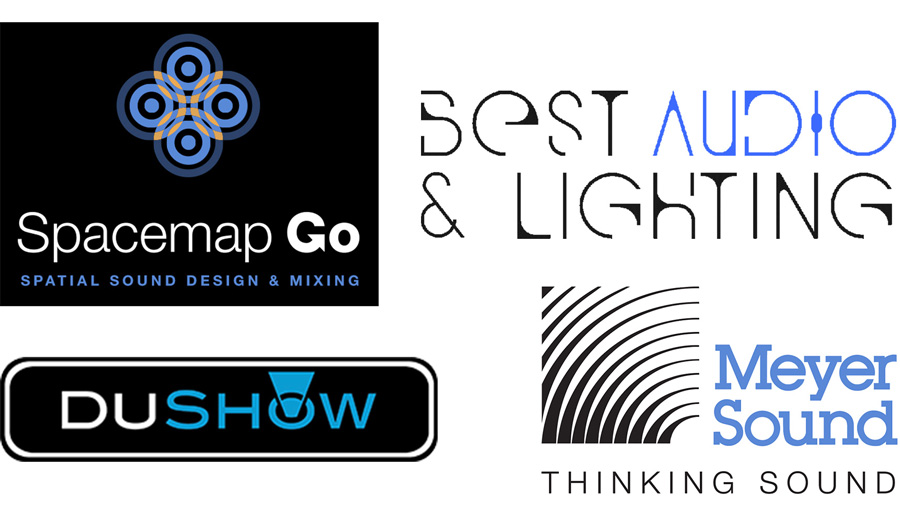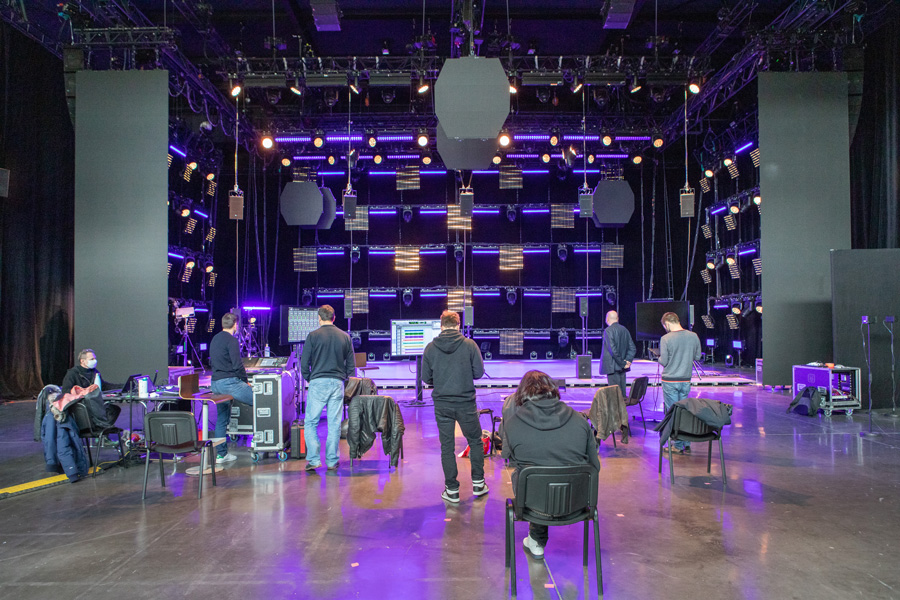
The demo was really impressive, conducted by Gaetan Salmon with the help of Matthieu Chenuil and Sébastien Nicolas from Best Audio & Lighting.
The idea? Demonstrate the creative capabilities, sound and objective of Spacemap Go, Meyer Sound’s iPad application that puts the power to bring audio to life at your fingertips with a simple update to Galaxy, the brand’s flagship matrix.
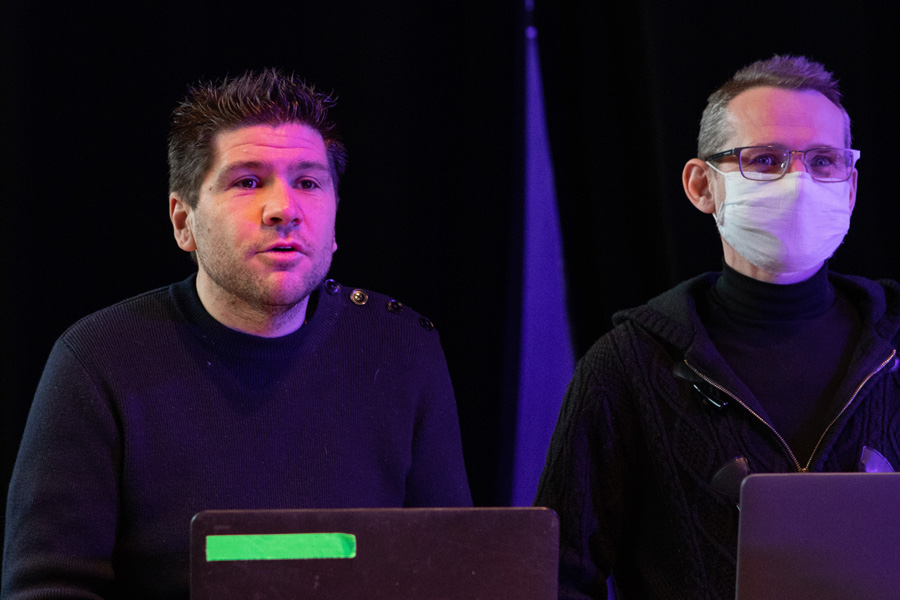
Decidedly creative, Meyer’s solution for spatialized sound is very complete, in terms of the range of possibilities available frontal, surround, immersive (360° with elevation) with all kinds of movement possible but also demanding in terms of the creation of the mapping that brings the magic to life, as well as in terms of defining the roles of the artist, the sound engineer, and the system/immersive engineer in charge of creating the soundscape. Keep reading, we’ll be expanding on all of this!
Unlike other object-based mixing systems, which are mostly used to exploit a wide frontal diffusion with precise source localization and the benefits of left/right non-interference, Spacemap Go works differently. You don’t create a sonic image within a larger system, you freely construct all the shapes and paths of the audio and find yourself within that image.
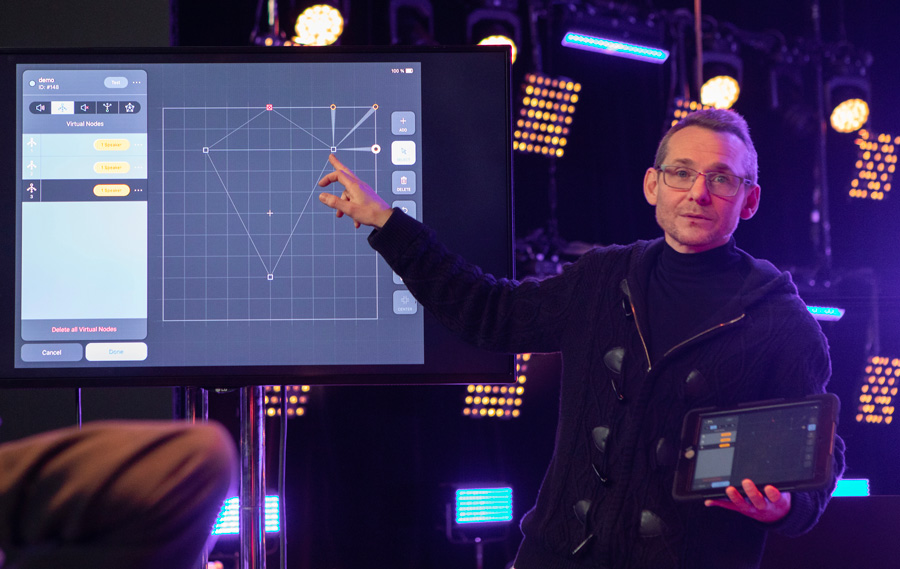
Spacemap at 35
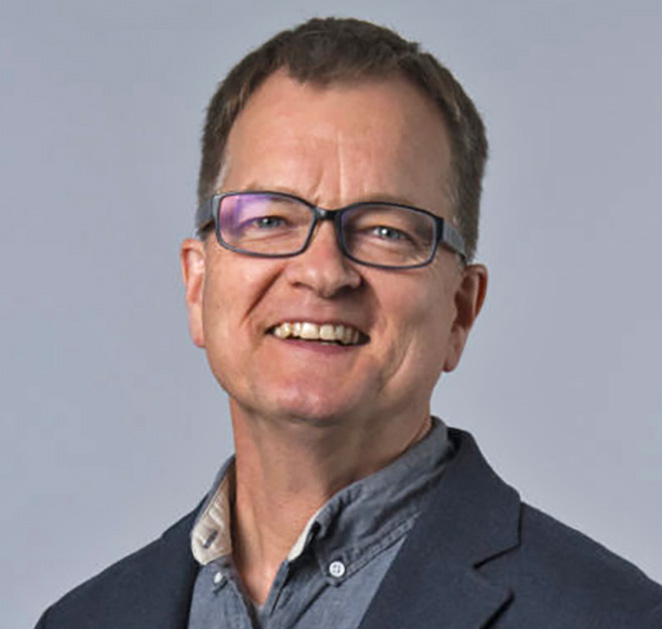
Is spatialization new at Meyer? If 35 years old counts as new for you, then yes, because it was Steve Ellison – to this day in charge of Spatial Sound at Meyer – who conducted the first tests in 1986 under a canvas dome in Sydney. Sixteen diffusion points, two subs, a few screens for images, and synthesizers as sources.
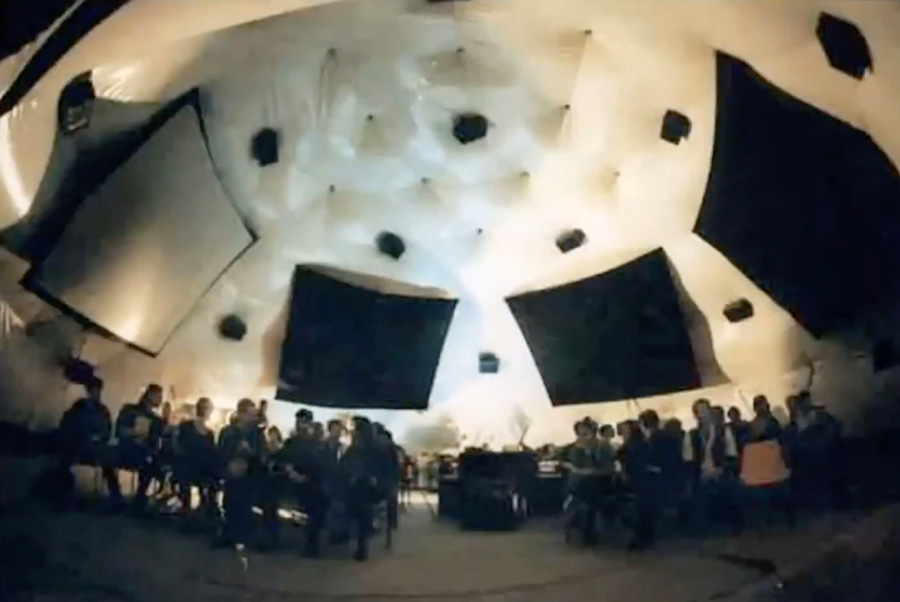
As early as 1993, a paper presented at AES mentions a Spacemap and, two years later, the first Cirque du Soleil show with Spacemap spatialization was performed. A few years later, Matrix 3 was born, a kind of big show controller that was not very practical but was able to run the Spacemaps and drive the speakers.
D-Mitri arrived in 2009 and with this extremely powerful multimedia platform which is still the brain behind Meyer’s active acoustics system, Constellation Spacemap is used as a working language for huge shows, especially in Las Vegas. Any movement can be modeled, programmed and then easily reproduced. But all this still requires a lab coat to be put into practice.

Spacemap becomes Go
The transition occurred the day Spacemap became accessible to everyone without the need for a Show Control, simply by harnessing the enormous DSP resources of the two Galaxy platforms, the 816 and the 408, that are quite remarkable for a distribution matrix, as each of them can support and process 32 incoming streams in AVB/Milan…
You know the rest: the app migrated to iPad and, since 2019 when it was introduced, updates have made it ever more powerful and user-friendly. Today the app, renamed Spacemap Go, is fully operational and can be installed free of charge. The same goes for the Spacemap update for the Galaxy.
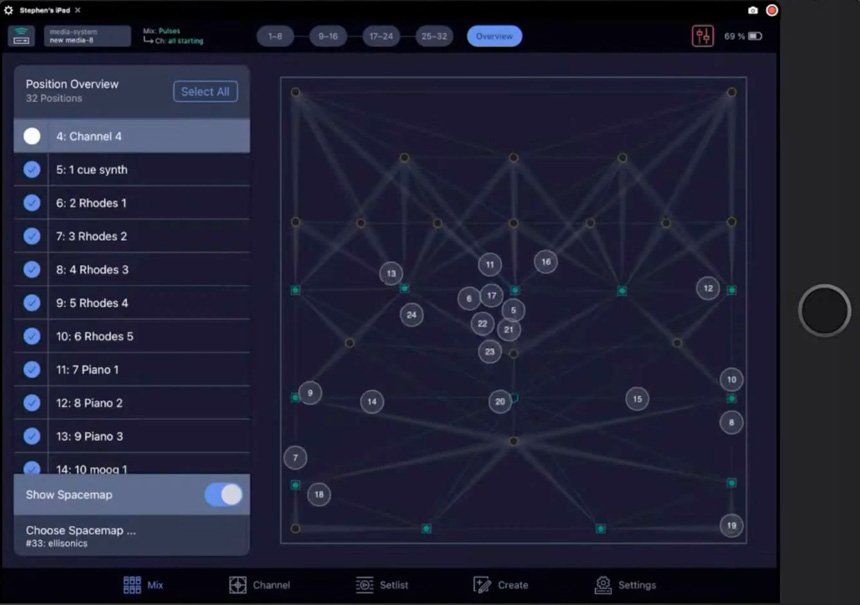
Spacemap is now 32 channels matrixed in real time through a VBAP algorithm with constant energy to the Galaxy outputs. Depending on your requirements, you can link as many AVB/Milan processors as you need to support your diffusion points, and to control them with as many iPads as you want.
Because the link is bidirectional, what is done on one iPad is seen on all the others… and also heard through your system! Spacemap Go has been designed by a group of young, somewhat nerdy developers. Once you understand the logic of its interface, you can start to have fun.
The maps
But who created these maps? Well, Steve Ellison of course, and that’s why we have to go back to Sydney in 1986 – with the fabulous Flintstone’s computer configuration and Yamaha TX816 modular synths as sources (and without playing “Le Grand Bleu”!) – to find the first map with its 16 points of diffusion, the future speaker nodes plus two subs, and if you look at it carefully, everything works with triangulation. The principle of the Triset was born.
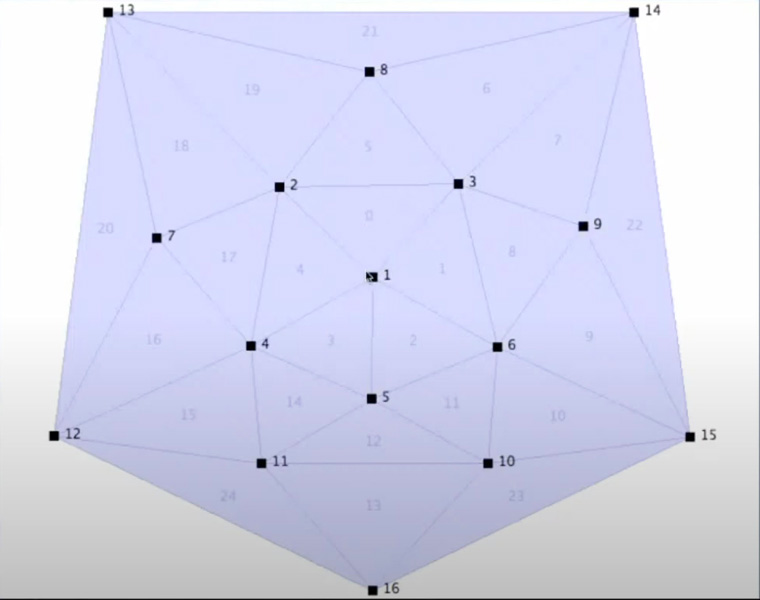
Let’s take three diffusion points: 1, 2 and 3. If the sound is played at the same level by the three points, it will be materialized at the center of the three, but if I want to bring it nearer to point 2, I just have to lower the levels of 1 and 3 and raise the level of point 2, and so on. Of course these adjustments are completely transparent.
For the user, it is enough to move the Spacemap Panner to hear the effect of movement in the Triset. If I go outside of the Triset… no more sound. This is where you have to start building your map with the other tools provided and not just multiply the diffusion points ad infinitum, by creating virtual points, called Virtual Nodes, in order to complete the mesh of sound all around you by making the available speakers work by triangulation.
To simplify your life, maps already exist and are even provided with Spacemap Go – which can be a time saver – but it’s better to create your own, your own movements, your own automations and, to say the least, your own fantasies!
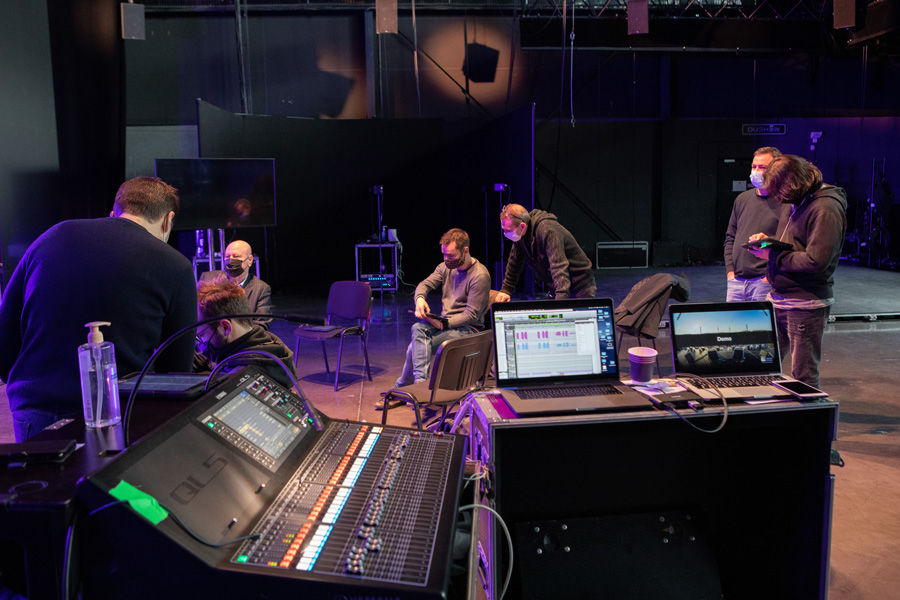
To do this, it’s best to have an iPad with a large screen and high resolution, like an iPad Pro. The regular model is great for viewing during a performance, and the Mini for tweaking on the fly, because it’s fast and you can put it down anywhere.
Of course, you can have all of them not only in front of you, but active, each controlling or displaying a particular function. Just for fun, the developers have achieved a possible maximum of 999 connected iPads, the limit being due to WiFi technology…
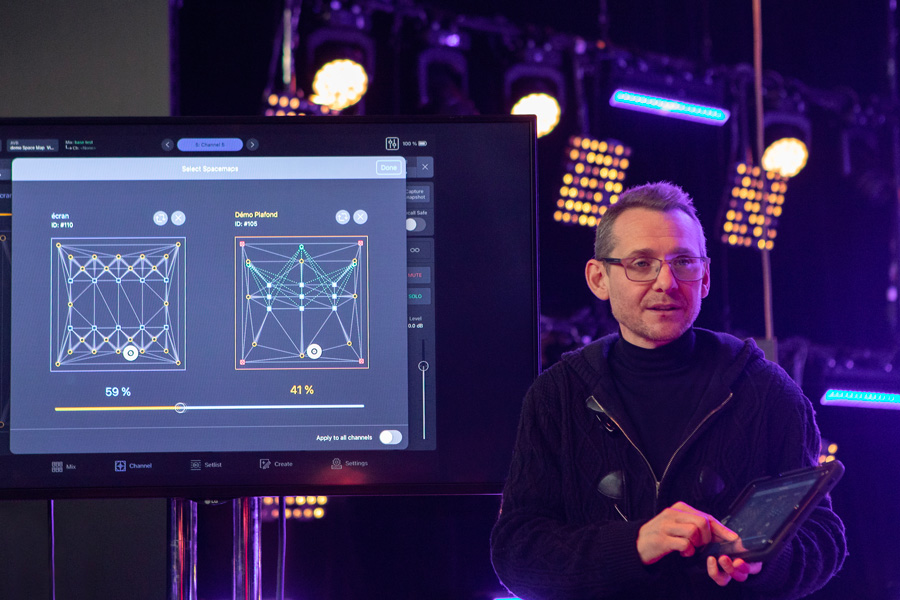
The strong point of Spacemap is its capability to emulate movement, and this is done via menus in the software or through external commands. It is thus possible to create various movement presets that you can design with your fingertips, and switch from one to another manually.
Or you can do it automatically, by linking maps so that these movements can be reproduced identically, or in reverse in mirror mode on any other map.
The freedom is absolute and the creative possibilities are endless, especially since we are now talking about defined movements that are clocked, but it is possible to link our 32 sources to just as many external interfaces that can be used to generate 2D movements, such as a guitarist walking across the room on a thrust stage, or in 3D with the same guitarist, but this time attached to a zip line or any other prop that makes him fly above the audience. During this flight, the reverberation of the guitar can circle to the tempo of the song… The Americans have a nice way of saying that anything is possible: “you name it!”
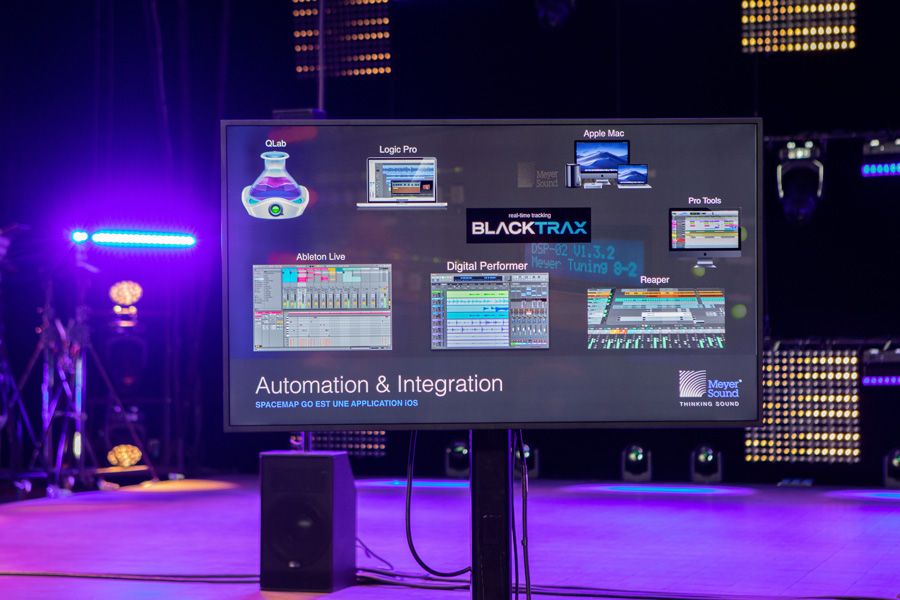
Spacemap Go communicates through OSC with QLab but also with Ableton Live, Pro Tools, Performer, Logic and Reaper, not to mention RTTrPM, which opens the door to tracking.
It is thus possible to facilitate the movement of a singer with a microphone in hand through the audience, by programming a Map that lowers the levels of the bottom speaker boxes by a few dB as he enters or exits the coverage if each one. The same thing goes for the front fills. Why not also have fun like Steve Allison does, playing with the speakers in an array and making a sound go up and down from one module to the next.
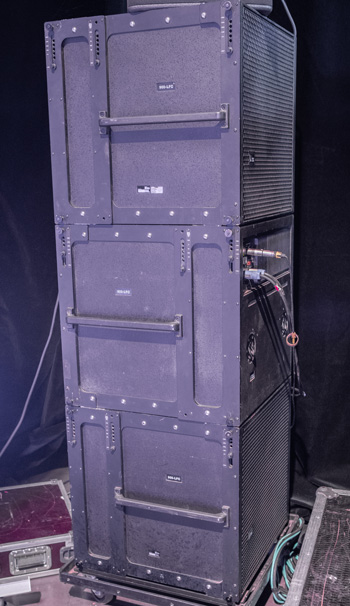
This capacity of Galaxy to serve as a creative matrix does not in any way detract from its primary purpose, which is to be able to time-align the system and add various powerful corrections, both at the input and at the output.
However, we cannot ignore the number of input channels, a maximum of 32 via AVB, which is fewer than those of the competition, even though Galaxy works natively at 96 kHz/24 bits, but this is likely to improve, and it is already possible to link two separate Galaxy systems to increase the number of matrixed streams to 64.
Officially, there are 64 outputs but, by connecting multiple Galaxies together in AV, we gain outputs. As there are 4,000 Galaxy units in the world, there are plenty available!
We should also soon see Spacemap Go making its way into the systems of mixing consoles that seem so limited with their native left/right capabilities.
Finally, Meyer’s active acoustic system, Constellation, comes to mind. Wouldn’t it make sense to create interfaces with Spacemap Go?
What about the sound of all this?
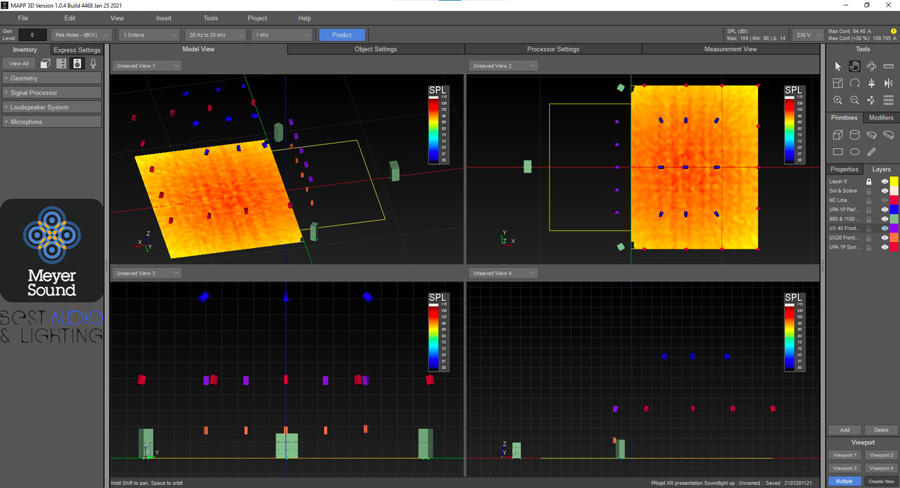
So, what about the sound of all this? First of all, hats off to Gaetan for setting up this system in the studio at Dushow, which was divided in half.
Secondly, I would like to thank Meyer for the seamlessness of the movements and the total absence of any noise, glitch, bug or similar. When it happens, it’s fast, precise and natural and it really makes you want to play with it.
We also listened to a few recordings of rock, classical and electronic music concerts, with frontal sound and frontal sound plus effects. Although we didn’t have enough time or perspective to be able to form a more precise opinion, we found all the benefits of a frontal system, but with a more sophisticated management of the front fills, and therefore of the very important front rows, than with other systems. We will listen to it again as soon as possible, but in other rooms and with other mixes.
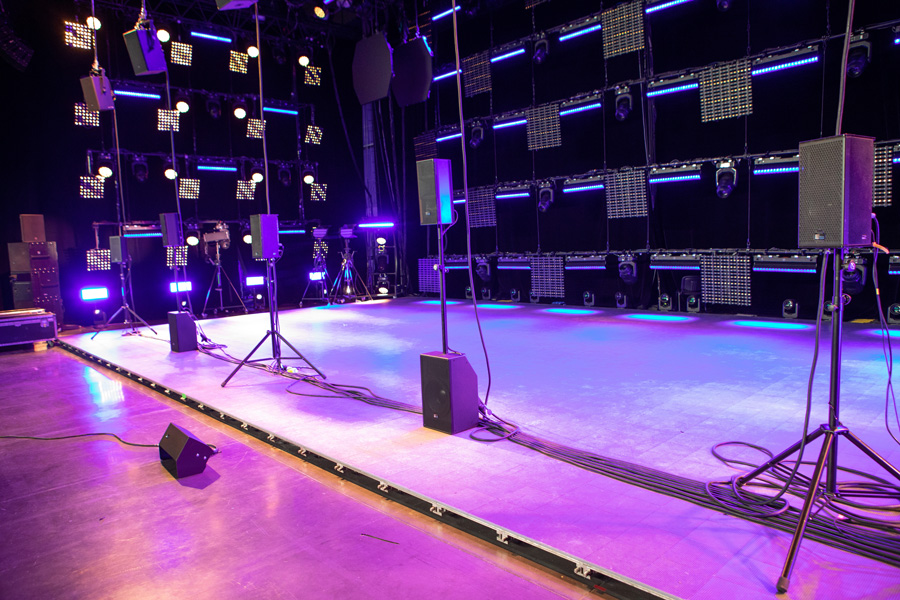
We should point out that, although Spacemap allows the speaker enclosures to be positioned at any distance from each other, this distance must be greater than the distance to the first pair of ears. The management of the bass is no different, either. The bass resources must be concentrated as much as possible within a half-wavelength. Finally, each enclosure must be able to cover the entire audience.
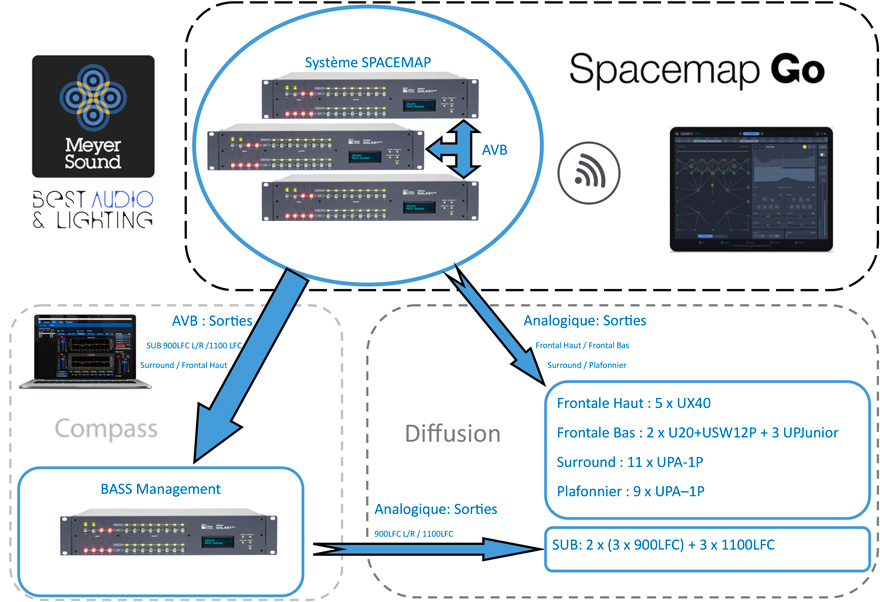
With an iPad, a Galaxy, or a Compass, anything is possible: frontal sound, immersive sound, spatialization effects, and even matrixing support.
It’s even possible mind you, this could be controversial to spatialize with this simple Meyer configuration and to drive any other brand of audio system that accepts AVB/Milan streams through its amplified controllers or active speakers.
And a Galaxy 408, small in physical size but huge in terms of DSP resources, is enough to have some fun with 32 ins and 16 outs via AVB. By the end of April 2021, a new version of Spacemap Go will be available on the AppStore.
As with all new products, you will have to be sensible and start, for example, with a left-right and a pair of rear surrounds to learn how to create spaces and then, little by little, build more complex systems and deliver truly creative sounds. Freedom allows everything, including mistakes, but when you do things right, you can go much further.
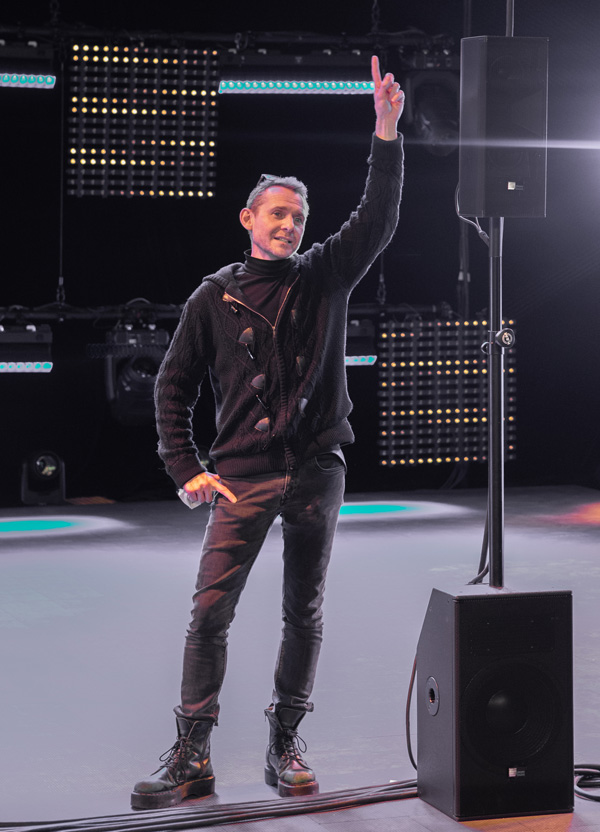
Gaetan points out: “we are always here to provide assistance and training to users, and Meyer is thinking of offering ready-to-use basic configurations plug-and-play templates.”
How do you get productions up and running with Spacemap? “By taking it slow and inviting the artist here for half a day with a tablet. He may or may not love it, but it’s up to him to signal the desire to push things further, or even develop a different show, but it’s wise not to abandon the left/right, because in many venues or festivals, you’ll have to return to it.”
In conclusion let’s applaud the resurgence of Meyer Sound, who – after having extensively played the indestructibility card and thus demonstrated the durability of their speakers – is finally starting to bring out new products that are necessarily smaller, lighter and more practical, but also more powerful, less power-hungry and sound even better.
This is exemplified by the very recent Ultra X20 (the little brother of the X40 that sent the UPA 1 to the museum after 40 years of service, sorry) and the USW-112P subwoofer, even if the volume of Dushow’s studio and the power of the Ultra X20 made its limiter hot. The performance of this combo sounds like nothing short of a live PA and the output is precise, clean and very dry ready to use. The only thing missing is an AVB/Milan input on each enclosure. That would make one less AD>DA conversion in the chain and provide even more detail and sound. It’s all ready – Especially our ears.
Dulcis in fundo. If these few lines have made you want to try Spacemap Go, there will be new introductory/training sessions at Dushow on April 19, 20, 21, 26, 27 and 28, 2021. Contact Gaetan for more information at gaetan.s(at)dushow.com
Demo system
– Upper front: 5 x UX40
– Lower front: 2 x UX20 + USW-112P and 3 x UPJunior
– Surround: 11 x UPAP
– Ceiling: 9 x UPAP
– Subwoofers: 3 x 1100-LFC center rear and 2 x 3 x 900-LFC left / right
– Spacemap system: 3 x Galaxy
– Subwoofer driver: 1 x Galaxy
Glossary
– A Spacemap is the plot of where the speakers are installed within the Spacemap Go iPad application.
– The Spacemap System is the set of Galaxy units (from 1 to 12) running in SPACEMAP mode.
– The Spacemap Panner is the cursor.
– The Triset: the triangle on which we move the Spacemap Panner to move our “object” between three sources.
– Speaker Node: an output from the Spacemap system (a physical output from a Galaxy)
– Silent Node: a node on the Spacemap that allows for progressive level control, fades and muting
– Virtual Node: a node that links to 1, 2 or more Node Speakers
– Derived Node: 1, 2 or x Node Speakers that link to a Derived Node, which is a physical output
For further information, visit :
– The Best Audio website
– The Dushow website
– The meyer Sound website



